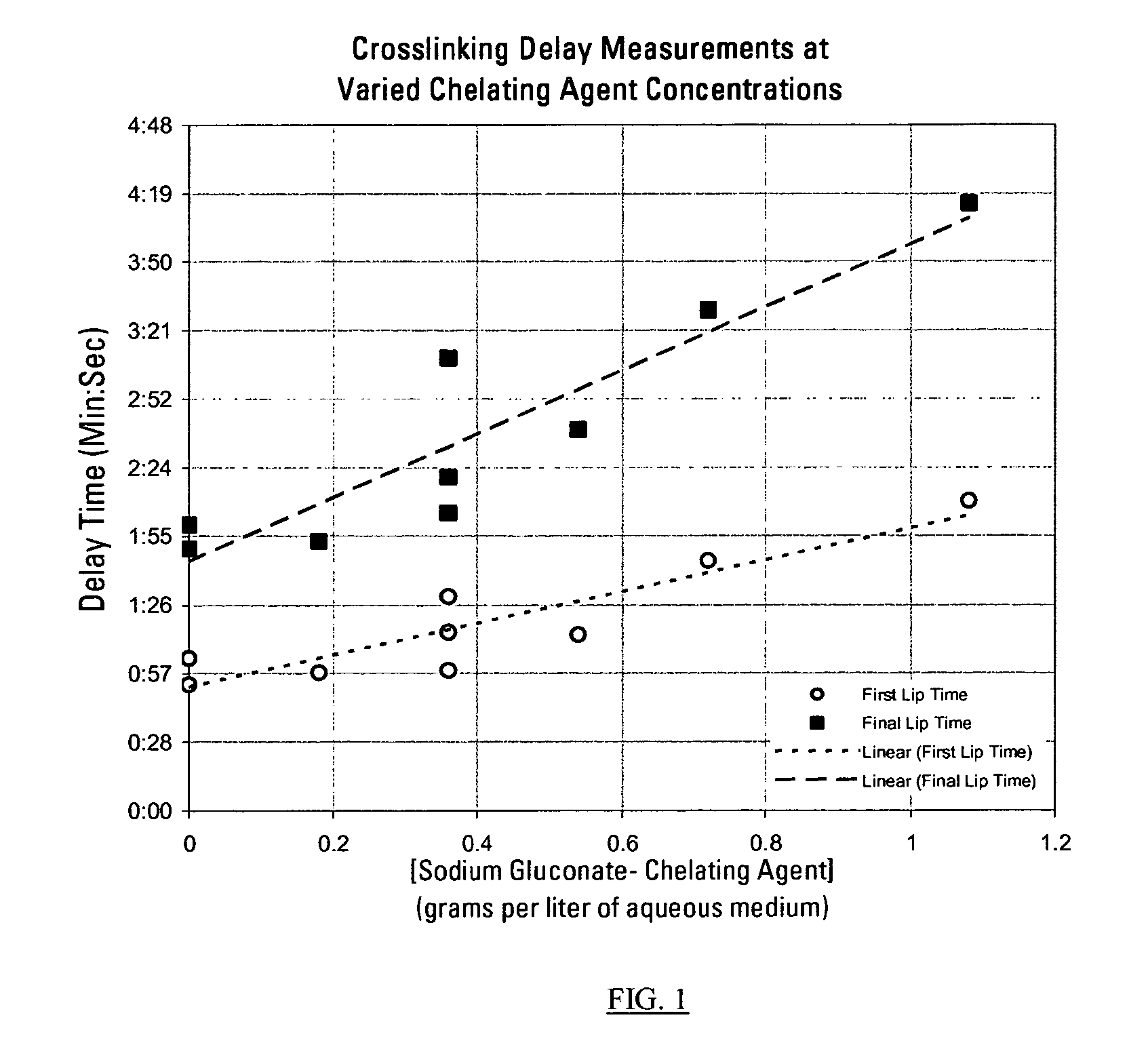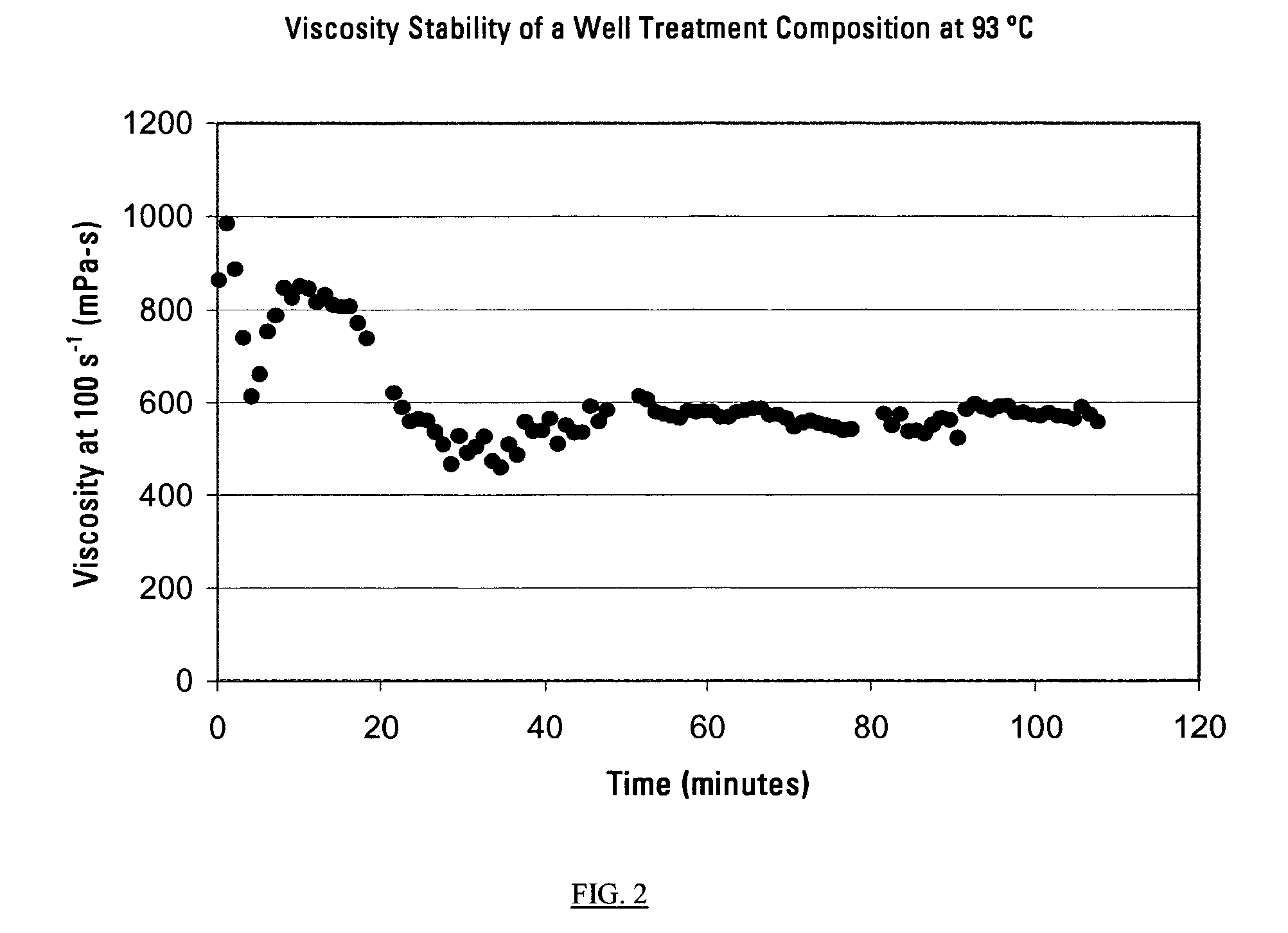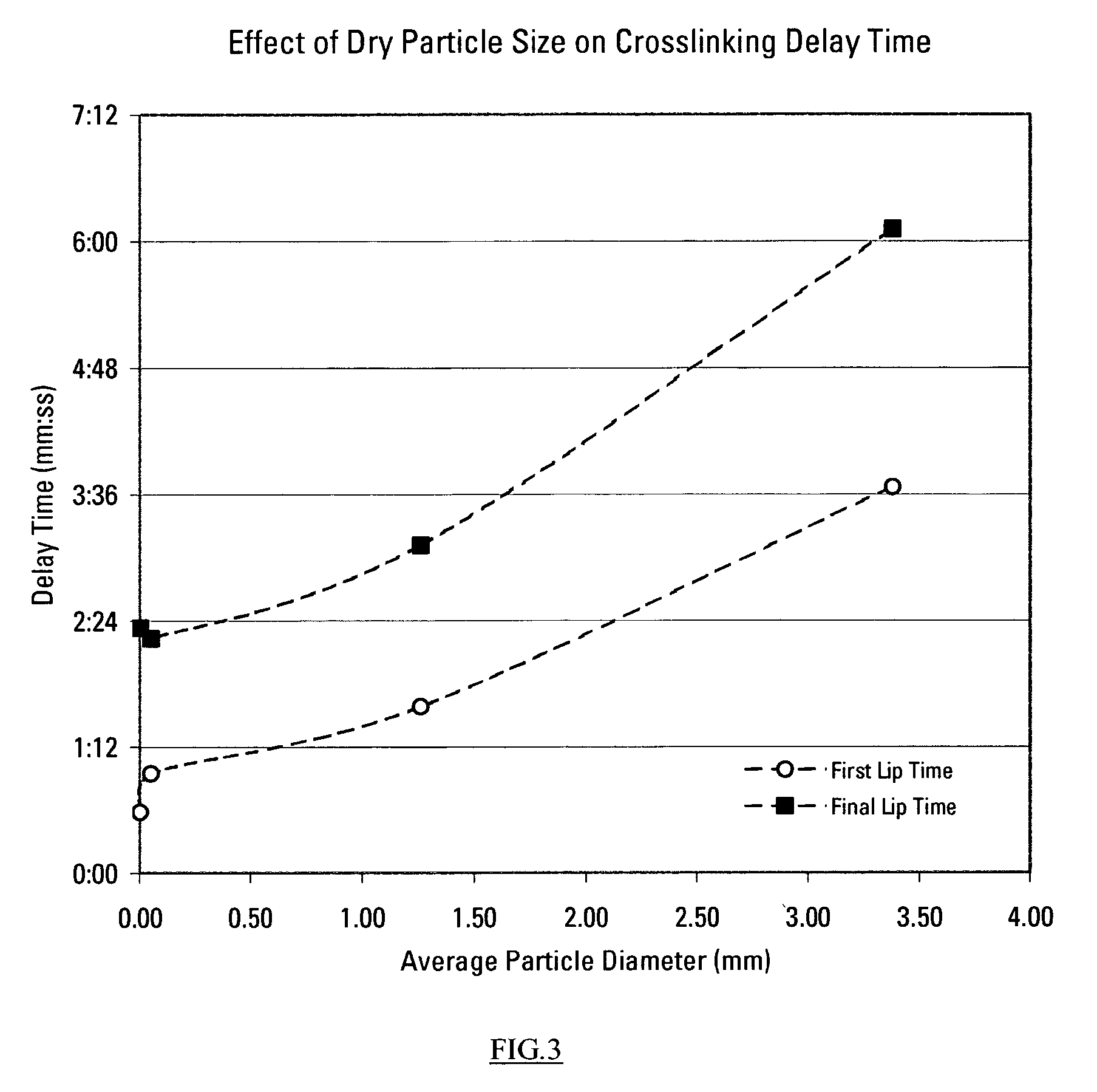Well treatment composition crosslinkers and uses thereof
a crosslinker and composition technology, applied in the direction of fluid removal, well accessories, chemistry apparatus and processes, etc., can solve the problems of large environmental effects, large costs of operating and conducting fracturing treatments, and large costs associated with storage and maintaining numerous liquids, and achieve the effect of achieving targeted fluid viscosity properties
- Summary
- Abstract
- Description
- Claims
- Application Information
AI Technical Summary
Benefits of technology
Problems solved by technology
Method used
Image
Examples
example 1
[0064] Example 1 illustrates the crosslinking delay obtained as a function of the concentration of chelating agent. The data presented here were obtained with sodium gluconate chelating agent and boric acid crosslinker added as a powder to the hydrated polymer. In this example, 4.2 grams of commercially available guar (from Economy Polymers & Chemical Co. of Houston, Tex., 77245-0246) per liter of aqueous medium were hydrated in a Warring blender for 30 minutes at 2000 rpm. 0.18 grams of dry caustic activator per liter of aqueous medium, and 0.18 grams of dry boric acid crosslinker per liter of aqueous medium were added, and different amount of sodium gluconate chelating agents were incorporated. Composition temperature was held at about 21° C. Then the first lip time and the final lip time were recorded for the different samples, as illustrated in FIG. 1. FIG. 1 shows that increasing the level of dry powdered chelating agent added to the hydrated guar in the presence of an activato...
example 2
[0065] Example 2 demonstrates viscosity stability of a well treatment composition according to the invention. In example 2, 4.2 grams of guar (supplied by Economy Polymers & Chemical Co.) per liter of aqueous medium was hydrated for 30 minutes in a Earring blender at 2000 rpm at 24° C., then mixed with 0.18 grams of caustic activator per liter of aqueous medium, and 0.56 grams of a dry granulated blend per liter of aqueous medium, composed of 1 part by weight dry boric acid crosslinker and 2 parts by weight dry sodium gluconate chelating agent. The treatment composition was then placed into a Fann 50 viscometer cup and the viscosity of the fluid was measured as a function of time at a temperature of about 93° C. As illustrated in the graph of FIG. 2, the fluid is stable at 93° C. up to at least 110 minutes.
example 3
[0066] Example 3 describes the influence of the granule size on the delay time. In example 3, 4.2 grams of guar (supplied by Economy Polymers & Chemical Co.) per liter of aqueous medium was hydrated for 30 minutes in a Warring blender at 2000 rpm at 24° C., then mixed with 0.18 grams of dry caustic activator per liter of aqueous medium, and 0.63 grams per liter of aqueous medium of a blend composed of 1 part by weight of dry boric acid crosslinker and 2.5 parts by weight of dry sodium gluconate chelating agent. Then the first lip time and the final lip time were recorded for the different samples, as illustrated in FIG. 3. In the graph illustrated in FIG. 3, the first set of data points at 0.00 mm average particle diameter, activator, chelating agent, and crosslinker were added to the hydrated guar in liquid form. The second set of data points, which represents particles which are slightly greater than, but still essentially 0.00 mm diameter particle size, represents the activator, ...
PUM
| Property | Measurement | Unit |
|---|---|---|
| concentration | aaaaa | aaaaa |
| concentration | aaaaa | aaaaa |
| concentration | aaaaa | aaaaa |
Abstract
Description
Claims
Application Information
 Login to View More
Login to View More - R&D
- Intellectual Property
- Life Sciences
- Materials
- Tech Scout
- Unparalleled Data Quality
- Higher Quality Content
- 60% Fewer Hallucinations
Browse by: Latest US Patents, China's latest patents, Technical Efficacy Thesaurus, Application Domain, Technology Topic, Popular Technical Reports.
© 2025 PatSnap. All rights reserved.Legal|Privacy policy|Modern Slavery Act Transparency Statement|Sitemap|About US| Contact US: help@patsnap.com



